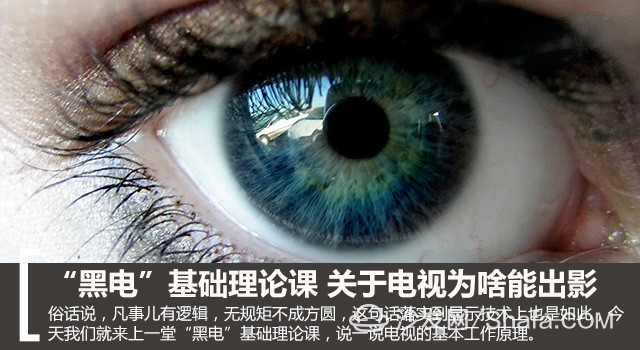
Aesthetic theory is not only the basic principles of fine arts, the current image rendering, color gamut, depth of field and other practical techniques. Let me give an example: The human eye does not have the ability to blur, so how to present the distance on a flat paper/monitor requires the support of the basic theory of “nearly practical and far-virtual, near-large and small,†and then there will be support. The "depth of field" derived from the "near-real far" and the "close to big, small, small" derived from the focal length. It is true that not all video technologies are necessarily linked to fine arts. However, it cannot be denied that fine arts is a long-term research of human beings and produces a basic aesthetic concept that is optimal to the eye of service.

Good technical articles abound, and today the author takes the opposite approach and uses cognitive technology to interpret the technology differently. This includes the physiological structure of the human eye and the human aesthetic and ugly concepts. Aesthetic consciousness, aesthetic experience, and the creation of sensuous technology, it is important to interpret the “highly sophisticated†technological principles, but sometimes it is necessary to look at the essence through phenomena. Today, we bring everyone a “black power†foundation. Theory class, talking about those things about home television.
"Eyeball Theory" Serves Vision from the Eye
Since we talked about the basis of aesthetics, there is a part of our body. We must first talk about it. That is the eye. The human eye is an organ that responds to light and has multiple uses. As a conscious sensory organ, the eye has vision. The rod cells and cone cells in the retina possess a sense of light and vision including color differentiation and depth perception. The human eye can distinguish between 10 million colors. The root cause is that all display technologies serve the human eye. Research on the human eye is also a required course for many technology manufacturers. This is a category of physiology. Video technology is a technical means of serving physiology, and the former is compared with the latter. It is more universal.
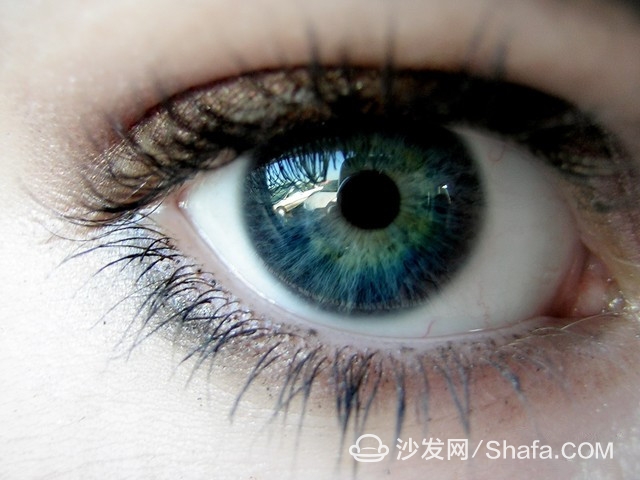
When it comes to visible colors, this involves another concept, “spectrum,†where spectrum is the initial state of color. We can simply divide the human eye’s view of things into two key factors, “reflection†and “lighting.†We all know the imaging principle of the human eye. The object reflects the light source and enters the eye. It finally images in the brain. The “spectrum†consists of colored light. Different objects can reflect different light, so the human eye can see different objects. different color.

Visible light distribution
The above picture is a simple visible light distribution diagram. It splits the light, and the middle part is the part of visible light that can be directly recognized by the human eye (also visible to the human eye, but not in the spectrum, such as pink and brown ), and beyond the human eye to identify the purple outer is the ultraviolet rays, on the contrary beyond the human eye to identify the red part of the infrared, but also outside the microwave, for example, and radar waves are also invisible light. The “inter-color†produced by the transition from one color to the other is the most complex color system. Theoretically speaking, the number of such inter-colors is almost infinite, as we mentioned before. The eye can only discern about 10 million of them.
We can simply understand that the theory of optics and fine arts has supported the display technology. Taking the liquid crystal display, the most intuitive embodiment of the optical structure is the light source of its backlight structure, combined with the visual principle of the naked eye. For objects and colors to be visible, light source support is needed. For the current technology, liquid crystals cannot achieve self-illumination, so they need support from the backlight source. After the liquid crystal is dyed and filtered, the final image is the core of the display technology. means. Look, knowing the theory we mentioned earlier, it's not difficult to see why the display technology uses the current structure. Well, after finishing the optics, what aesthetic theory is included in the display technology? Let's talk about it.
Trichromatic theory has never changed
We all know that the original TV set was a black-and-white TV. Then what factors are needed for the transition from the black and white world to the colorful world? First of all, we must start with the colors. I believe that many young artists who have studied art know that the three primary colors of pigments are "red, yellow and blue" and the primary colors of colored light are "red, green and blue." Why is this?
The mixing of the three primary colors of pigments, also known as subtractive mixing, is the reduction of light. After the two colors are mixed, the luminosity is lower than the original luminosity of the two colors. The more the colors are combined, the more light is absorbed and the closer it is to black. Therefore, the more deployment times, the worse the purity, and the more it loses its simplicity and vividness. The mixing of the three primary color pigments should theoretically be black, and in fact it is a kind of black turbid color with very poor purity, and it can also be considered as a dark gray with very low luminosity. Magenta and green, yellow and purple, blue and orange, all the colors of the mix are close to black.
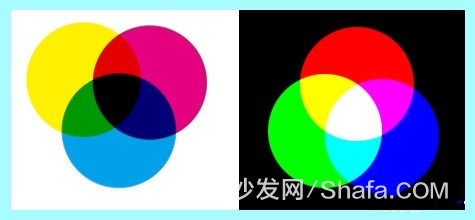
The three primary colors of light are light color mixing. The mixture of light colors is additive color mixing, which is the increase of light. Two kinds of color light are mixed, and the luminosity is the sum of two colors. The more the color combination, the stronger the luminosity and the closer to white. Among them, magenta and green, yellow and blue, cyan and red, these complementary light mixing and red, blue and green primary light mixing become white light. Color TVs, color displays, color LCDs, and three-color fluorescent tubes are designed using this principle.
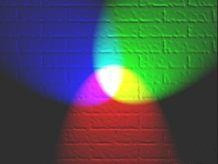
To put it simply, paper is white and it needs black. The screen is originally black, and the black field only needs to reduce the brightness, so it does not need black, but instead needs white. It is so simple. The above-mentioned additive color mixing and subtractive color mixing is the reason.

At present, almost all display devices have similar dyeing principles. RGB (R: red), (G: green), and (B: blue) colors are mixed to evolve the TVs, monitors, and mobile phones in front of us. Of course, there are also RGBW structures that incorporate white light in the three primary colors. In short, different colors are displayed by adjusting the amount of light entering different color pixels, which is the coloring principle of the present display device.
What is the gamut color gamut?
For the human eye's visible color, the presentation of each display panel is different, depending on the color gamut standard it adopts. We usually have many names for the color gamut. I believe you have seen it in different places. Color gamut, you can define it as a standard, it can be regarded as a hard indicator, but such a hard indicator is not simply higher and better, now many consumers misinterpret the meaning of color gamut, this color The domain is not simply a standard. It is the collective name for many standards.
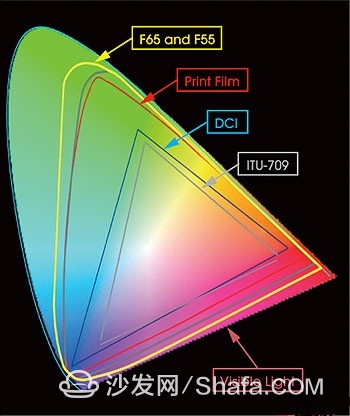
As we mentioned earlier, the three letters of RGB, each different panel type, and the color of different color materials have different processes, so the light transmittance is not the same, so we must test according to a standard, we see the above This kind of drawing can be abbreviated as a color gamut diagram, RGB represents three basic colors, and the difference in the panel's performance of the three colors causes a difference in the values. The coverage area between these differences is that of a display device. Performance gamut.

Due to the bottleneck of current technology, current display devices cannot completely cover all our visible light color ranges, so there are various color gamut standards. For example, sRGB is a color accuracy defined by manufacturers such as Microsoft and Hewlett-Packard. The color gamut standard provides a standard way to define colors so that various computer peripherals and applications such as display, print, and scan have a common language for color.
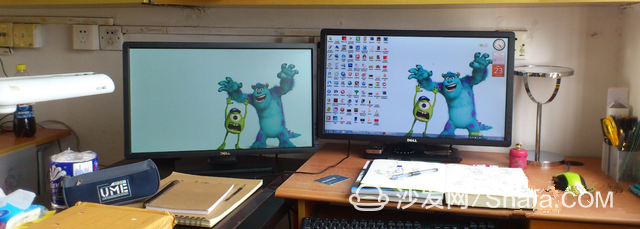
When color becomes an important part of critical information, the role of color becomes even more negligible. For example: When you buy clothes on Taobao, you need to have a true, accurate color reproduction, and can not have color. sRGB eliminates the difference in color reproduction of different display systems.

The RGB color between different display devices naturally changes, so that after different display devices, the colors cannot be correctly reproduced. Today, as computer-centric demonstration devices are increasingly becoming a key tool for market development, correct image and color reproduction have become more important than ever. Now that the sRGB standard is in place, users can be sure that they get relatively uniform colors regardless of their viewing on a variety of display devices.
We use sRGB as an example, just because this color gamut is very popular and is currently an indicator of the color standard of a display device, but the coverage of sRGB on the overall gamut map is not like the area of ​​some other standard. As large as it is, it is just a color gamut standard that is now recognized by everyone as an accurate method to restore the true color of objects.

In summary, the gamut values ​​in the TV and monitor products we are talking about now are measured according to one of the above criteria. For example, the color gamut of a product is 105% coverage of sRGB, which is roughly the same The color gamut of the product is 5% larger than the sRGB standard in the color gamut of the sRGB standard color gamut.
So is it better that the color gamut of a display device is bigger? Through the above description we also come to a brief summary. Excessively rich colors do not have much benefit to the color reproduction of the display device, but they are more likely to please the eyeballs and make the imaging device more vivid. For the television products of the main viewing programs, the richer color gamut can directly enhance the user's viewing enjoyment, but for the professional display used for designing the drawing, there is a higher requirement for the color restoration of the displayed image, so the display is The device is not as good as the color gamut, and it is better for the user to select a suitable display device according to their own use when selecting televisions and monitors.
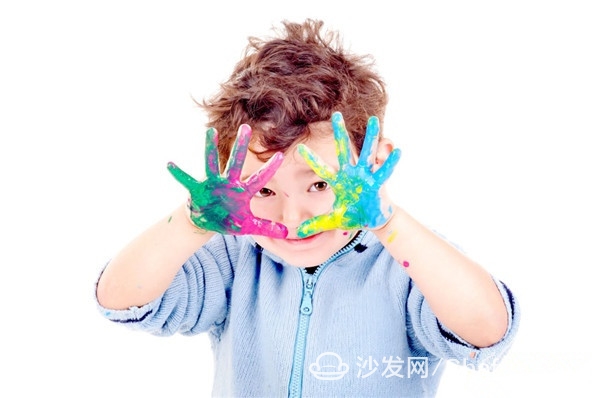
To sum up: the basic principles of display technology on the market are these, from the perspective of image, color, and may not be comprehensive, but it is the most direct display of the basic working principle of the display device, LCD display The technology relies on the backlight source for imaging. The OLED product is self-illuminating, but the principle of dyeing is the same. From the working mechanism of several display devices above, we can infer that almost all the display terms of the products are gimmicks or hard power. When it comes to product purchases, don’t be obsessed with hype and slick technical nouns. Everyone is a little bit of a thing.
Smart TV/box information can focus on smart TV information network sofa butler (http://), China's influential TV box and smart TV website, providing information, communication, etc. on TV boxes, smart TVs, smart TV software, etc. Answering questions.Pressure Thermometer,Capillary Thermometer Measured,Capillary Thermometer Measured In Boiler,Stainless Steel Pressure Gauge
ZHOUSHAN JIAERLING METER CO.,LTD , https://www.zsjrlmeter.com